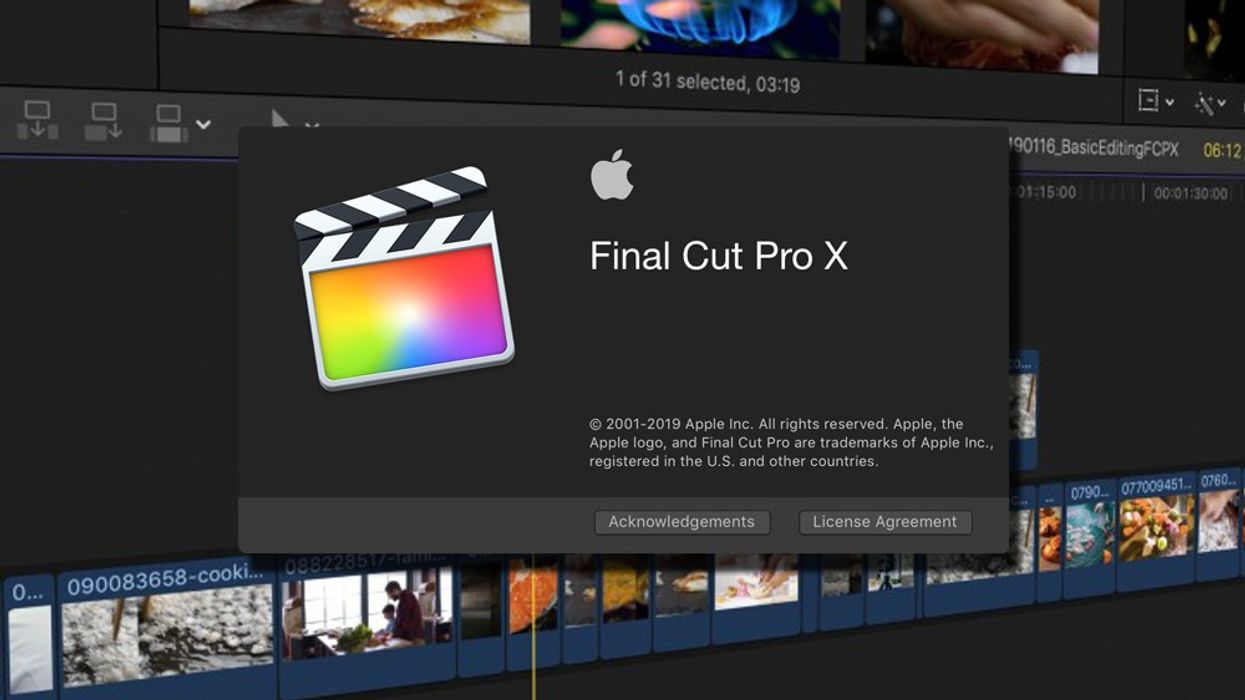Everything You Need to Know About Editing in FCPX
FCP X is underrated, and it shouldn’t be. Learn how and why the NLE can be your go-to software.

Both Mike Matzdorff and I are professional career editors who work on multiple edit systems. We’ve realized that most NLEs are variations on a theme—source clips, tracks, insert, and overwrite. Final Cut Pro X stands alone with a truly unique approach to editing including its ability to cut with no tracks and a magnetic timeline. This results in a vastly different and more efficient editing workflow with significant advantages, if you learn the ropes.
This new approach has an unlearning curve for all that knowledge you spent years acquiring. So we’ve teamed up to create a series aimed at editors who are interested in learning what sets Final Cut Pro X apart from the pack.
Work your way through each video for a firm grasp of FCP’s workflow, or jump directly to the timeline crash course if that better matches your learning style.
Episode 1: Overview
[youtube https://www.youtube.com/watch?v=BBKkfO2mF90This is a big picture, broad-strokes overview of the Final Cut interface. This video will walk you through the layout, nomenclature, and concepts behind FCP’s approach to editing, organizing, and how it relates to other NLEs. If you just want to see what the lay of the land is, start here.]
Or, for those of you who wish to skip the “getting to know you” phase and prefer to jump straight into the deep end of the pool, consider starting with our crash course timeline tutorial.
Episode 2: The Browser
[youtube https://www.youtube.com/watch?v=QxMH_w1khZkWait, a 30-minute video about bins? Ah, but these bins have superpowers!]
Skip this video and you’ll be able to work via an “old-school” workflow, but you’ll miss out on some of Final Cut’s amazing efficiencies that will change how you edit. We know it’s not the glamorous part of editing, but there are many gems worked into the browser that you should know about. For reality or documentary editors, the keywording feature is a true game-changer.
Episode 3: Viewer & Timeline Part I
Timelines: the meat of the edit system. If you can’t quite imagine how “editing with no tracks” works, this will answer your question.
There’s a lot of unlearning to do here and new concepts to understand. Like our previous videos, this isn’t a tutorial per se. Instead, it’s a deep dive into how Final Cut Pro’s timeline works. If you want to go straight to the fun stuff, here’s a good place to start.
Episode 4: Viewer & Timeline Part II
If episode three is the meat, episode four is the potatoes. We tried keeping it all in one episode, but we had to go back for seconds. It’s just so yummy!
As the timeline interface is so radically different from every other NLE you’ve ever used, there was too much to unpack in a single episode. By the end of this second episode, you’ll know enough to play around with FCP’s magnetic, trackless timeline. This should significantly reduce the inherent frustration many experienced editors have when transitioning from a track-based NLE.
Episode 5: Sharing and Delivery
You’ve finished your cut and need to send it to your client. Or you want to send the trackless audio to your mixer who is using Pro Tools. Or your colorist is working in Resolve and needs an XML. This video is for that.
Episode 6: Assistant Editing
Not only do editors need to learn a new workflow, but assistant editors do, too. We haven’t forgotten you, mighty assists, who keep the edit rooms running with your behind-the-scenes technical magic! In this video, Jay Frosting walks you through prepping scenes for a feature film or TV show. Covered topics include ingesting clips, syncing audio, and prepping clips for the editors.
There are some amazing efficiencies here that will make your assistant duties faster and easier than ever before. No need to tell the editors you’re getting some well-deserved free time, your secret is safe with us.
Episode 7: Basic Film Editing
Mike walks us through editing the scenes that Jay prepped in episode 6. This will give viewers a good understanding of what editing scripted scenes is like in Final Cut, and shows why editors who learn Final Cut don’t want to go back to traditional track-based edit systems.
Bonus Episode
Our first—and possibly only—genuine tutorial. It’s been said that experienced editors will need a week or so before they really get the hang of Final Cut Pro. Much of that involves unlearning what they already know and embracing a unique workflow.
This video aims to cut that transition time down to 45 minutes. By the end of this video, you’ll feel like a newly born fawn, taking your first steps in a lush green meadow. Your balance may be a bit unsteady, but you’ll be ready to bound through the flowers in no time at all.
Summary
We know Final Cut Pro isn’t for everyone. But for editors willing to learn something new, there is a truly revolutionary approach to editing waiting for you to discover.
But be warned, once you get a taste for it, going back to managing tracks—“Oh, I have to put this music down over here, and deal with all these layers of overlapping sound effects”—will become loathsome torture. There is another way, and it is our joy to share this discovery with our colleagues.
















